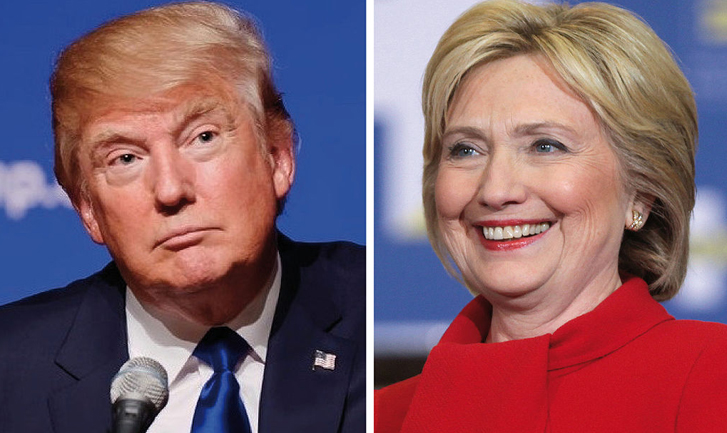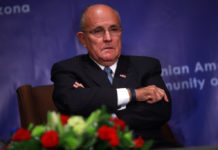
Debate checkers usually focus on evaluating the facts of what each candidate said. While it is important to get the facts straight, focusing on the truth content of their words is not nearly enough to evaluate the actual impact of the debate on the audience. It often matters much more how candidates say things, or what they choose to leave out, than whether they stuck to the facts or not.
This results in large part from a number of typical human thinking and feeling errors, what scholars call cognitive biases. We as human beings think of ourselves as rational creatures who form our opinions based on logical facts. In reality, our emotions play a much larger of a role in influencing our beliefs than we intuitively think. We make quick and intuitive decisions based on our Autopilot System of thinking, also known as System 1, one of the two systems of thinking in our brains. It makes good decisions most of the time, but also regularly makes systematic thinking errors. The other thinking system, known as the Intentional System or System 2, is the deliberate, reflective system. It takes effort to use but it can catch and override the thinking errors committed by System 1.
Politicians skilled in the art of public speaking can take advantage of our cognitive biases to shape our opinions. They do so through making points based less on evidence, reason, and logic – the Intentional System’s strengths – and instead playing to the much more powerful Autopilot System that guides our thinking. Unless we are paying very close attention, and turn on our Intentional System to catch specific biases that might influence our thinking, we are highly likely to be influenced by appeals to these flawed patterns of feeling and thinking.
Both candidates made a number of such appeals. For example, Hillary Clinton stated that Donald Trump is Vladimir Putin’s puppet. This invoked a bias likely to cloud the minds of the audience – the halo effect. This thinking error emerges when we see something we like or dislike, and have a reason to associate this emotional reaction with something else.
Clinton knows that many Americans do not like Putin, and the image of being someone’s puppet is quite undesirable. Combining Trump with Putin and puppet is bound to create a negative emotional association. Now, a fact checker would not be able to give a straight answer on whether Trump is Putin’s puppet or not – this depends on one’s interpretation, and Clinton can certainly defend the perspective that she put out. Yet we can recognize that her framing of this issue is designed to appeal to our Autopilot System and create a certain impression that does not necessarily match the facts on the ground.

Caption: illustration of the halo effect (xkcd)
Trump, in turn, used repetition to drive home his claims, invoking the illusory truth effect. This flawed thinking and feeling pattern causes our brains to perceive something as true just because we hear it repeated a number of times, despite the evidence on the matter. In other words, just because something is repeated several times, we perceive it as more true, regardless of whether it is objectively true or not! Now, the previous sentence repeated the one before it, and had a similar structure. It did not provide any more actual information, but it did cause you to believe my claim more than you first did when you read the sentence. In fact, much of the advertising industry is based on using the illusory truth effect to get us to buy more goods.
In the debate, Trump’s relentless repetition of the claim that NAFTA is the “worst deal ever signed” and cost Americans “millions of jobs” functions the same way. Despite the fact that experts disagree on the impact of NAFTA on the US job market, Trump has successfully convinced many millions that NAFTA is terrible. He makes similar statements about him not supporting going into Iraq, and many of his supporters are staunchly convinced that he opposed the war, despite clear evidence that he was for it before he was against it. His repetition of his claims, in opposition to clear evidence, still causes our Autopilot System to perceive them intuitively as true, and it takes effort – Intentional System effort – to fight this perception.
Turning once again to Clinton, we see her playing into a thinking error known as illusion of control. This error occurs when we perceive ourselves as having more control over a situation than we actually do. For instance, Clinton attributed the decline in the US national debt in the 1990s primarily to her husband’s policies. This very much exaggerates the actual impact that any president can have on the national debt during the president’s own tenure in office. This impact can only be measured later, after the policies passed by a president had time to make an impact.
Clinton also insisted – as did Trump – that her policies would add nothing to the national debt, despite independent reports by experts showing that Clinton’s economic reforms would likely add billions and Trump’s plan add trillions to the debt. Clinton’s statements on debt, along with Trump’s, showed both illusion of control and the desirability bias, the thinking error that one’s idealized outcomes would come true.
Another claim often repeated by Trump ties in to his core message – America is much worse than it used to be. He conveys a rosy picture of an idealized American past, when everything was right with the world. The campaign run by Trump even has that as his central slogan: “Make America Great Again.” In doing so, Trump speaks to our emotional system’s tendency to view the past through rose-colored glasses, a bias known as rosy retrospection and also as declinism. In reality, the world has grown better on a whole variety of different measurements, for instance with people experiencing less violence, and having greater health, longevity, and economic wellbeing. Despite this reality, Trump’s combination of the illusory truth effect and declinism strikes a deep chord with many people’s Autopilot Systems.
These are some among many cognitive biases that the candidates used to influence our perceptions and opinions during the debate, and in public speeches as a whole. Because we are not aware of how the candidates are appealing to our Autopilot Systems, they are capable of swaying our viewpoints without our knowledge to believe falsehoods. It is vital for us to start fallacy-checking the debates and public statements more broadly in addition to fact-checking them to guard the safety of our democracy.




